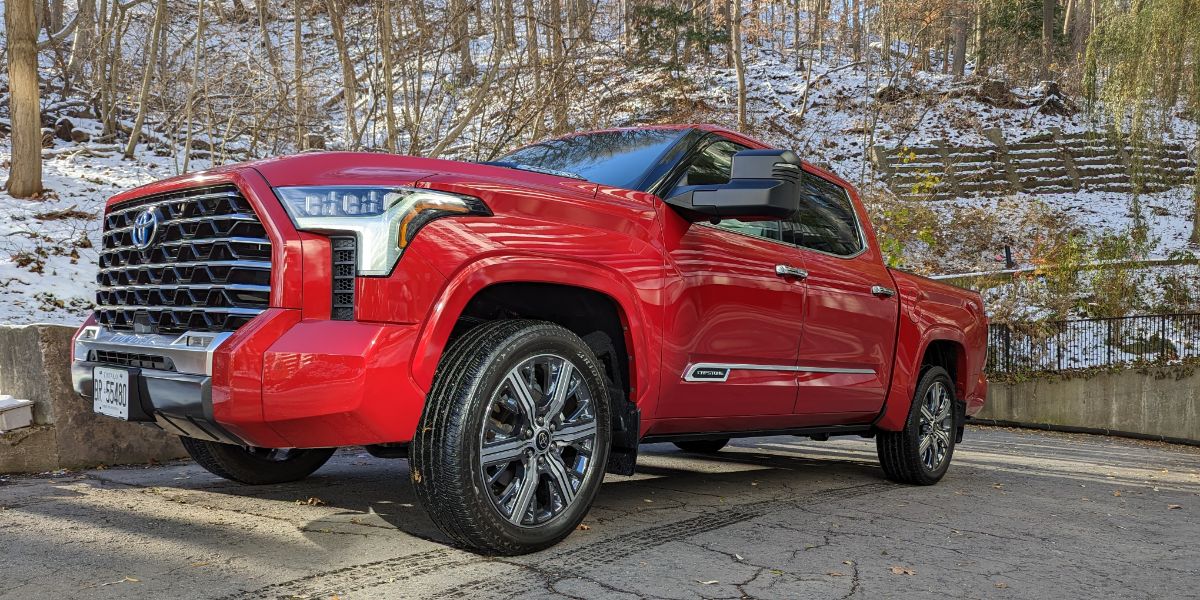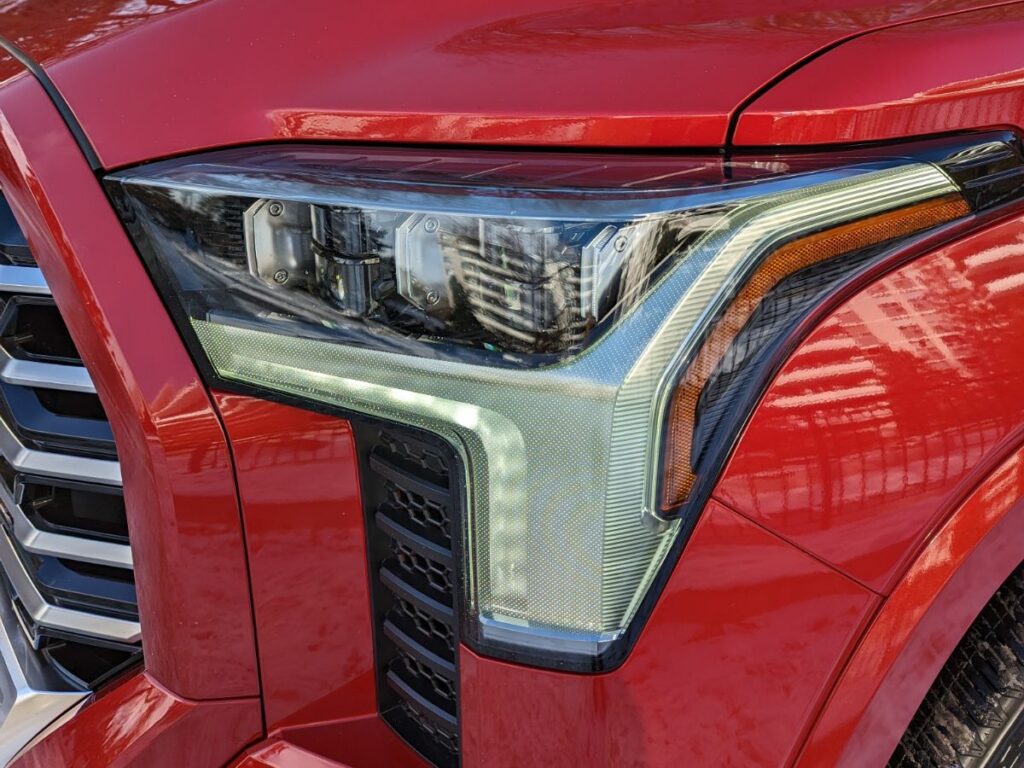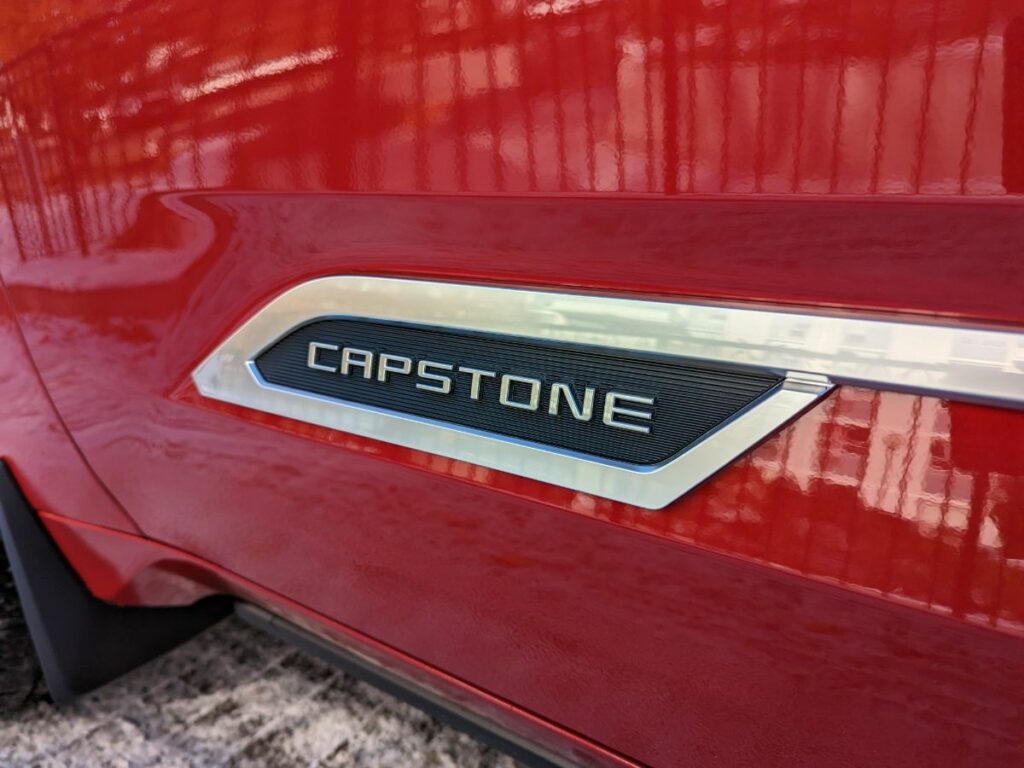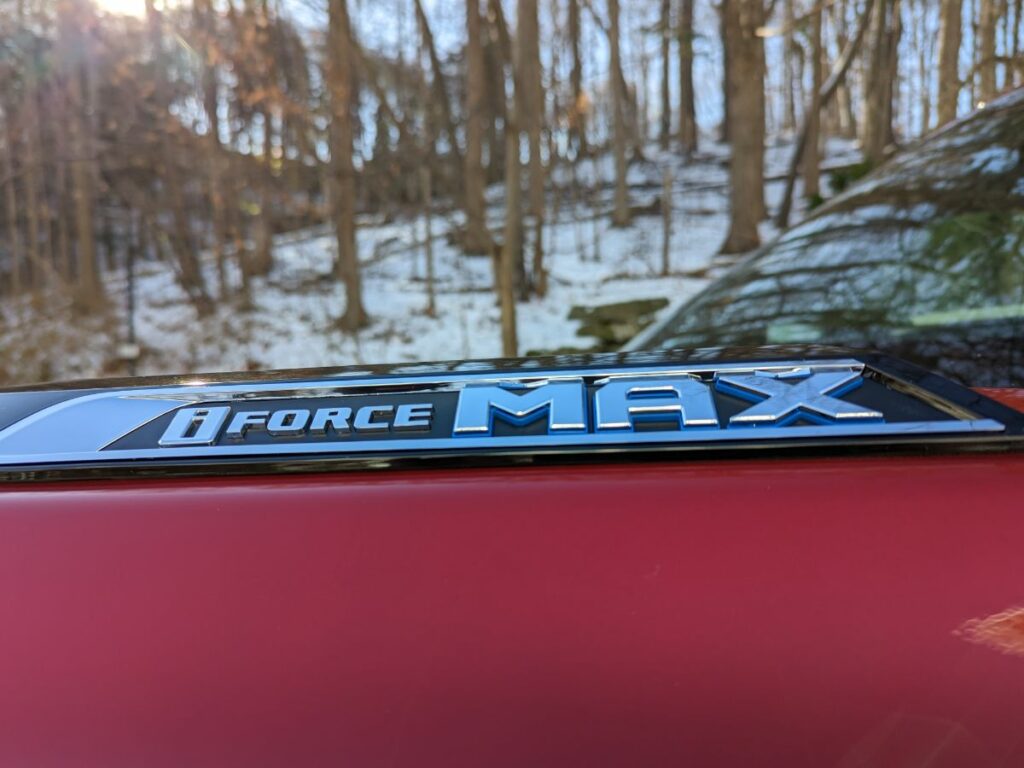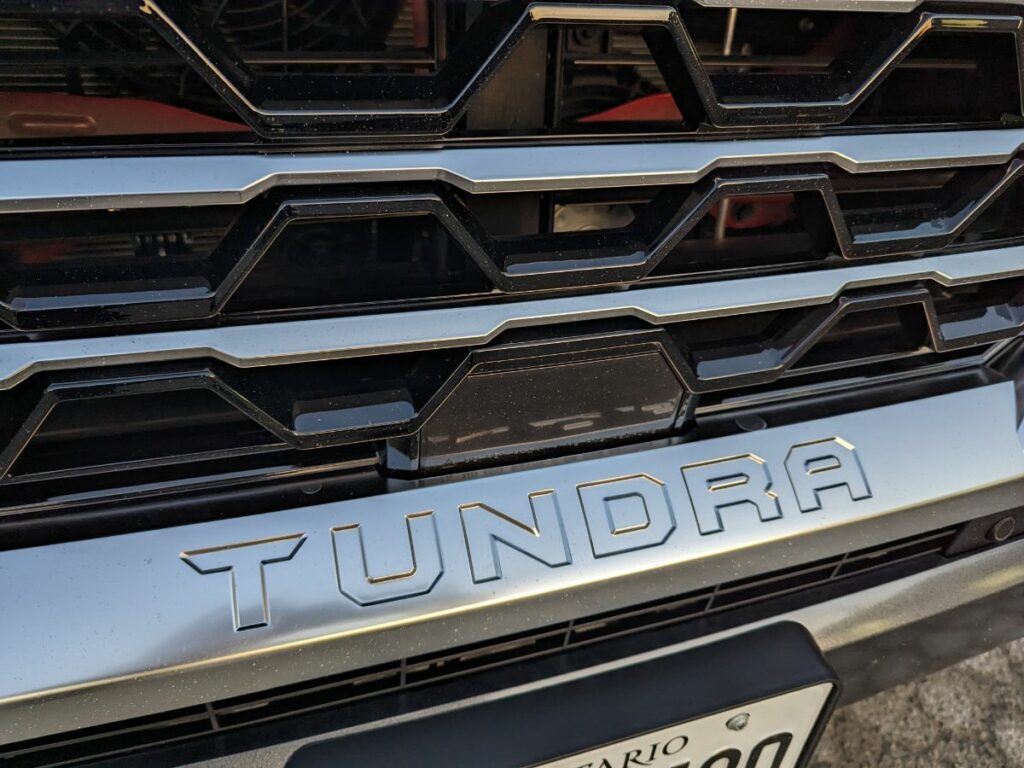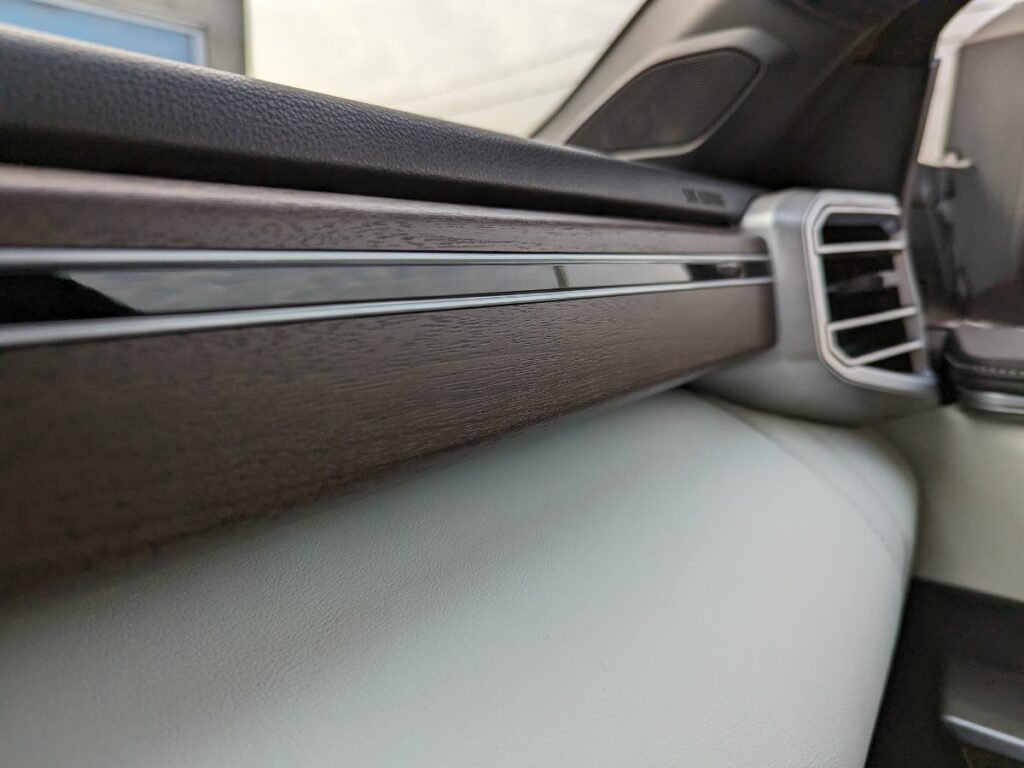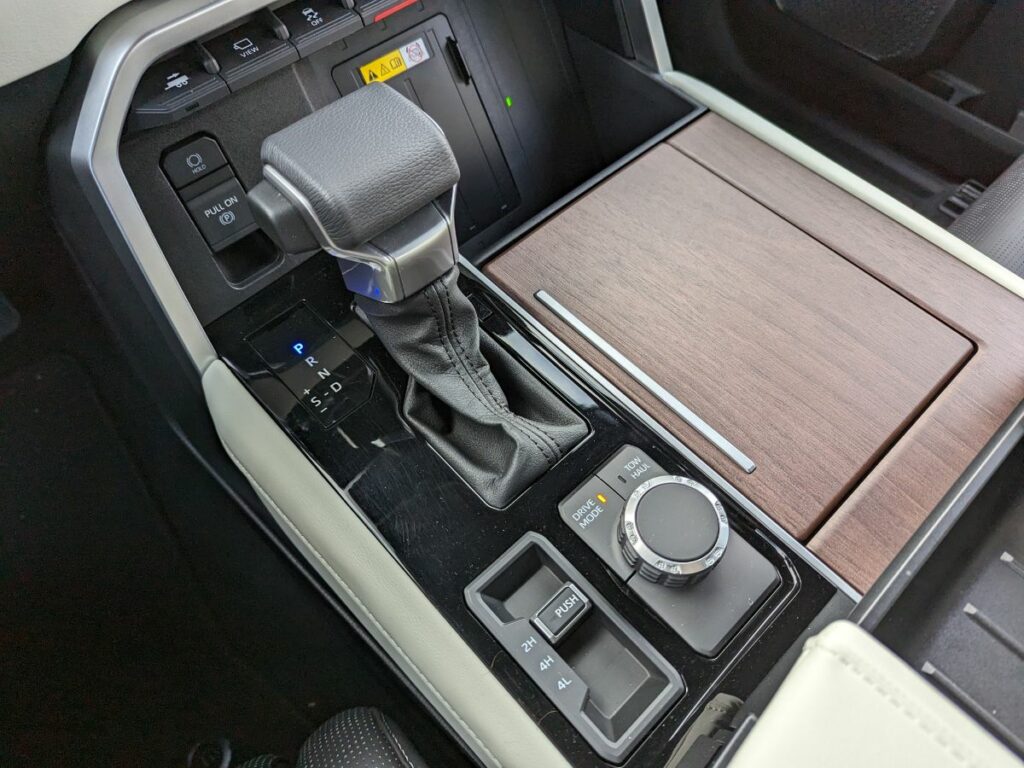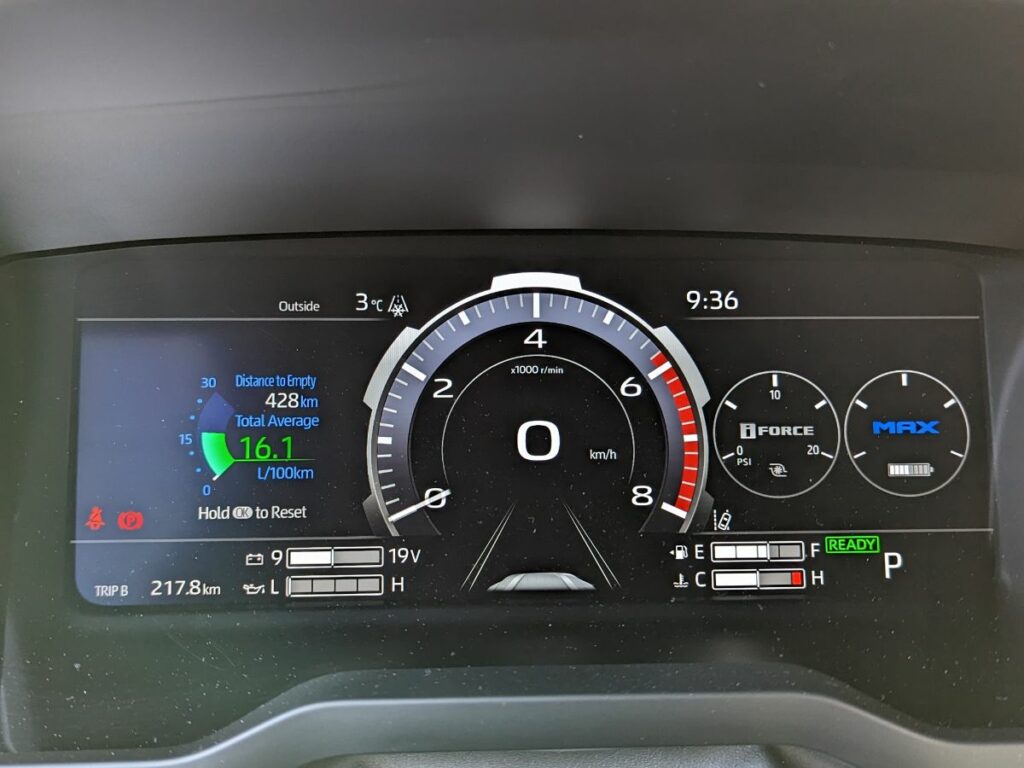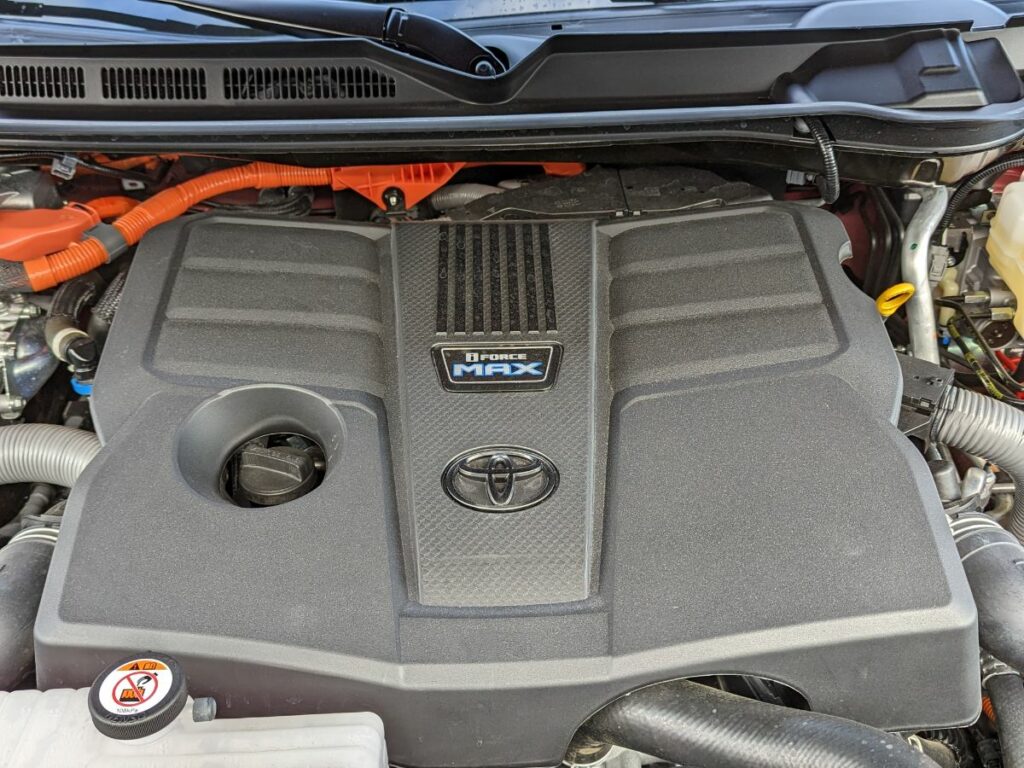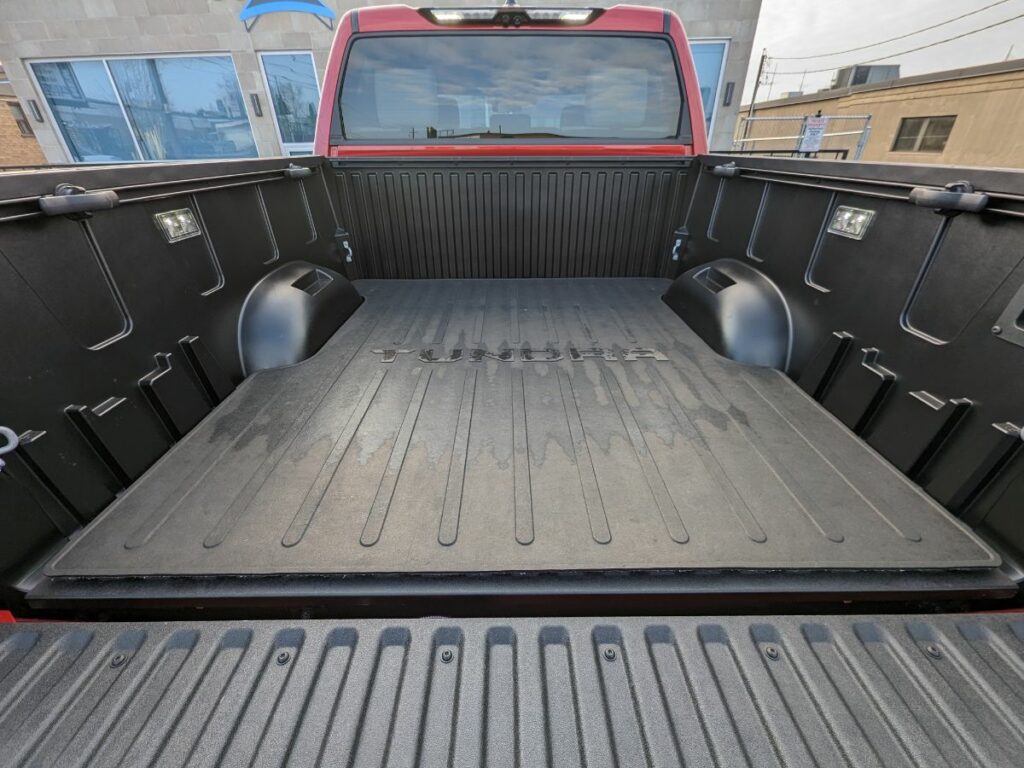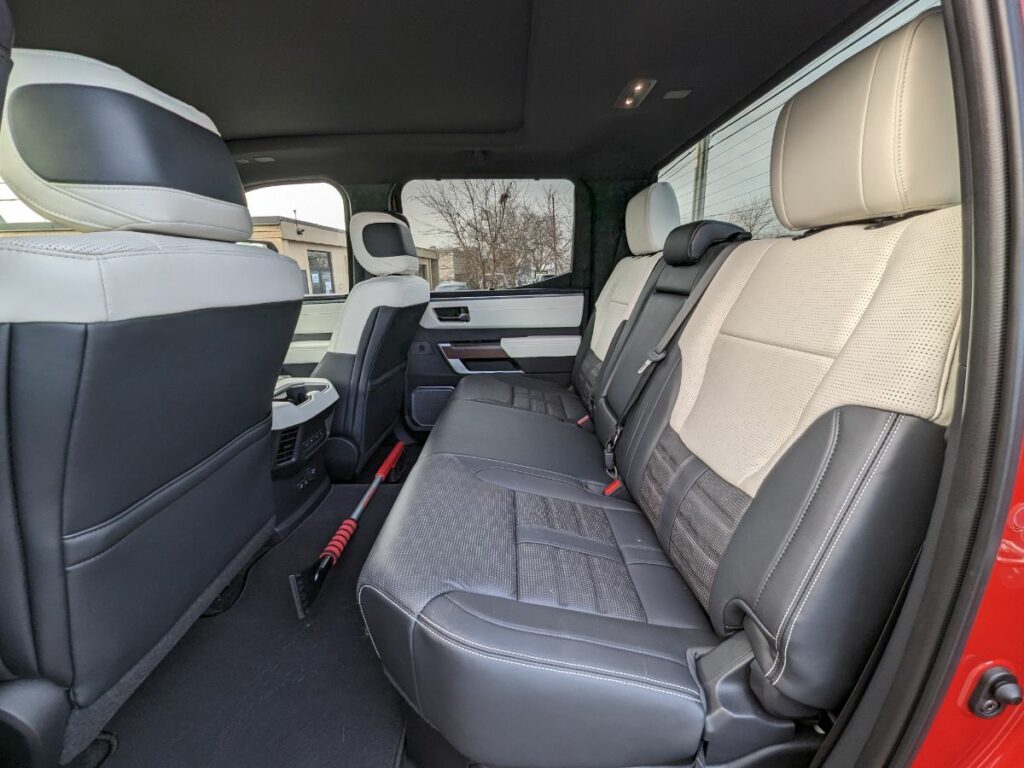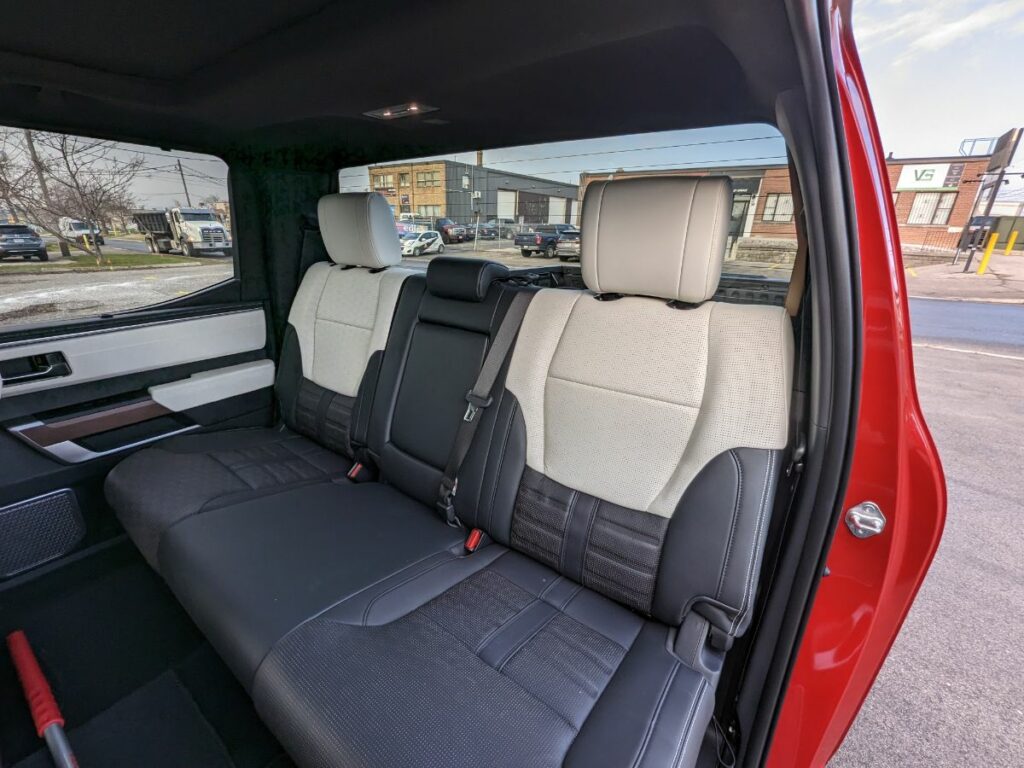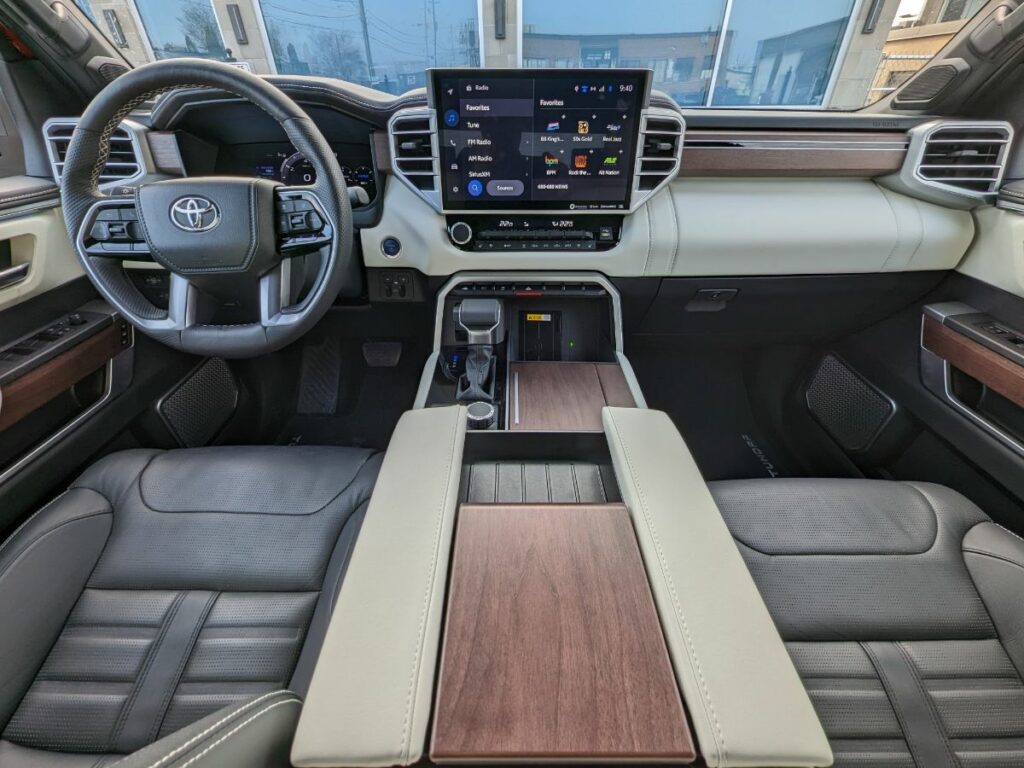It depends on who you ask, but it is a generally accepted truth in the car biz that the average product lifespan Is five years, seven at the longest. Recently, we found ourselves wondering which vehicle currently on sale today has gone the longest since its last clean sheet redesign. We realized the answer came in the form of the truck we were sat behind the wheel in, and that is the 2023 Toyota Tundra. It was by far and away the greybeard of the entire automotive industry, with a massive 15-year gap from the time it was unveiled as a 2007 model in its last generation until now. Only the original VW Beetle spent more time between development cycles, continuing to be produced in its original form from the 1950’s well into the early ought’s. To put this into perspective, back then TikTok referred to the sound a clock made and not the latest brain rotting app, the term ‘pandemic’ was relatively obscure, and food didn’t cost an arm and a leg.
Perhaps it would be best to start with the bones of the new truck to tell you what’s new after so many years of slab-sided styling, robust but noisy (not to mention very thirsty) V8 engines and an interior that looked as if Playmobil may have consulted on its design and materials.
The frame of the 2023 model has been strengthened in strategic areas not only for toughness and towing capability, but also to provide a more composed driving experience. A resolute structure is an ideal point for the suspension engineers to do their thing, with a big plus coming in the form of much improved ride quality. The new and improved fundamentals also translates into increased room for passengers and in the truck bed as well.
Toyota chose to bin the rear leaf spring suspension in favor of coil springs, a strategy that has been embraced by the Ram line of trucks and to much acclaim- some say the Mopar offering is the best riding pickup you can buy. The Tundra says sayonara to the two-step shimmy you’d get while traversing bumpy roads, especially when unladen. Upper trims have air suspension out back, but it mostly serves as a leveling device rather than something designed to soften impacts from the road. The engineers showed some love to the front end too, and there you will find a slick double wishbone setup employed alongside a wholly reimagined steering system to help keep the Tundra where you’ve pointed it while offering more precise handling. Hydraulic mounts where the body meets the frame are also used to lend an added sense of refinement the old model could never dream of providing.
The powertrain will no doubt grab headlines for its complete rethink over the old V8/6-speed automatic tandem. Toyota decided to downsize the engine to a 3.4 litre V6, but with two turbos bolted up to each bank of cylinders. In higher trim levels such as the Capstone model we sampled, it features i-Force MAX hybrid technology which basically mean that the turbo V6 enjoys further augmentation in power from a battery pack. It churns out some heady numbers, making 437 total horsepower and 583 pounds feet of torque. Attached to a new 10-speed gearbox, the Tundra is significantly mightier than before, but more efficient too. How does a sub-six second blast to 100km/h sound to you while drinking less gasoline in the process?
Although the Tundra’s iForce MAX styles itself accurately as a bit of hybrid technology, it isn’t employed strictly to eke out as much energy from each drop of gasoline the way it does in other hybrid models wearing a Toyota badge. Instead, it’s positioned as a boost to the already impressive output of the new V6. It does have an overall net positive effect on fuel economy, and sometimes you’ll notice the engine shut down while the truck makes its way under electric power only- but with 2,805 kilos to move around and a relatively small battery pack, it isn’t long before the V6 fires up to step in.
Perhaps the greatest compliment we can pay to the new i-Force MAX tech is that it’s by far the smoothest and best engineered example of a hybrid drivetrain that we have ever come across, and that includes the gold standard of Toyota’s own Prius. Sometimes we’d have to glance at the instrument panel to confirm which method pf propulsion we were enjoying, be it fully electrical, engine only or a combination of the two. It is truly uncanny how well it’s dialed in, and we would gladly order a Tundra in this spec which is saying something because we generally turn our noses up at hybrid powered pickups.
Get the Tundra out on the road and its new chassis and suspension imbue the pickup with a sense of poise the outgoing model simply could not muster. Its prodigious mass feels well controlled and buttoned down, but it still isn’t the happiest when simply commuting around town. Point that massive grille towards the highway and the Tundra really comes into its own, lavishing a near luxury car experience for those installed within the spacious interior- it’s a sweetheart if your journey calls for long hours in the saddle. Lean on the throttle and there’s lots of power on tap for passing and merging, and the piped in audio sound seems a bit much at first blush but we grew to like it- put the windows down and you’ll be treated to the odd whoosh from the turbos. Pickup trucks clocking in with similar dimensions and curb weights are never going to feel nimble but its clear that Toyota has worked hard to make the Tundra as friendly and manageable as possible. We need to call out the truck’s extremely strong exterior lighting game, with sequential LED turn signals fore and aft and headlights that do a terrific job of lighting your way without frying the retinas of your fellow motorists.
Your own retinas will be pleased by the 14” infotainment screen that dominates the interior’s landscape. It seems a bit weird that an automotive juggernaut like Toyota, with its vast resources and engineering clout have not been able to give us an infotainment system that both looked good and was intuitive to manipulate- until now. It’s a staggering improvement from anything else we’ve seen previously from the brand and should make its way in one form or another into every car in the Toyota stable. Taken as a whole, the interior enjoys significant upgrading, especially so in Capstone trim as our tester was outfitted. It is a quiet and comfortable place to be, with commendable attention to detail and pleasing materials and textures, even if it comes off looking a trifle busy.
If your takeaway after reading thus far is that the Tundra has made huge improvements over its ancient predecessor, you’d be right. If you think that Toyota has built the perfect truck, you’d be slightly mistaken. Let us start with the fuel economy, which we expected to be better while keeping in mind this is still a rather large and heavy pickup truck. Our observed fuel mileage of 14.7L/100km was better than what the old V8 could muster on a good day with a brisk tailwind, but we anticipated a more economical figure than the number we arrived at. Not helping that are the less than favourable aerodynamics imparted by the positively gargantuan side mirrors but there’s a compromise at play- their size does wonders for helping you park the truck in tight spaces. On the aesthetics front, we wish that the Capstone models could tone down the chrome- our tester was slathered with it and everything is topped off with somewhat garish sparkly wheels. We are not sure if Toyota is exercising some dark sense of humor by spec’ing a white leather interior in a truck ostensibly made to work and get dirty while doing so, but we would recommend going with a darker palette of colours for the interior. Lastly, the heated steering wheel doesn’t get as toasty as we would have hoped for on frigid morning commutes.
The Tundra has always played fourth fiddle in terms of pickup sales next to its Big Three competitors, but it still manages to capture the hearts and wallets of a healthy amount of buyers and we wouldn’t be surprised if the 2023 model manages to sway even more shoppers with the ground up redesign. There’s a lot to like here and with a plethora of trims and specifications, there’s a very good chance there is a Tundra that is right for you. Let’s just hope Toyota doesn’t wait another 15 years to bring us the next one.
2023 Toyota Tundra CrewMax Capstone Hybrid – Specifications
- Price as tested: $88,466
- Body Type: 4-door, 5 passenger Pickup Truck
- Powertrain Layout: Front engine/Four-wheel drive
- Transmission: 10-speed automatic
- Engine: 3.4 litre twin turbocharged V6, DOHC, 24 valves
- Horsepower: 389 @ 5,500 rpm
- Torque (lbs-ft.): 479 @ 2,000 rpm
- Electric Motor: AC motor, 48 hp, 184 lb-ft
- Total System Output: 437 horsepower/ 583 lb-ft of torque
- Curb weight: 2,805 kg (6,184 lbs)
- Observed Fuel Consumption: 14.7L/100km (16 mpg)
